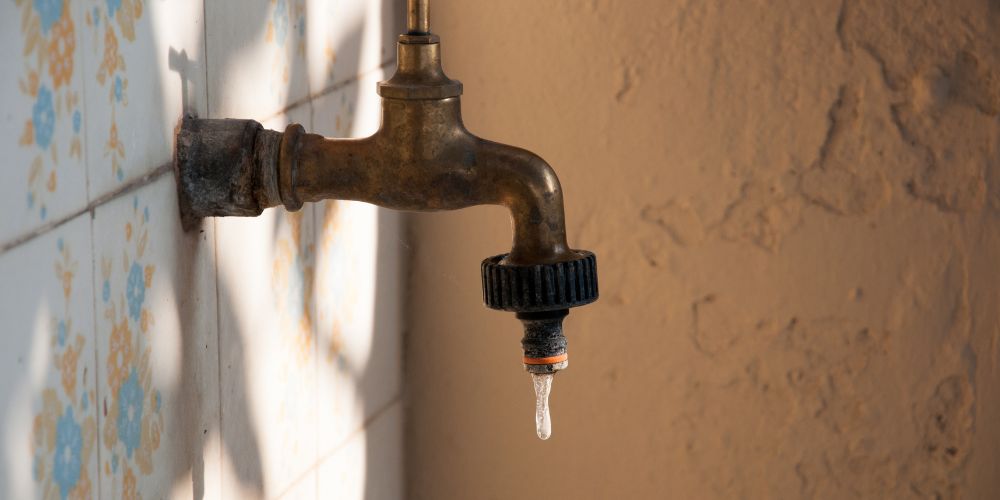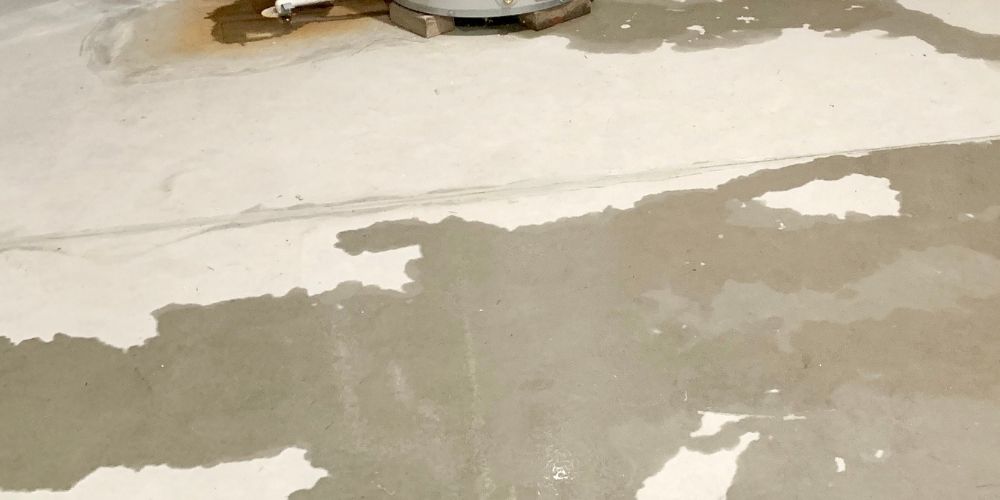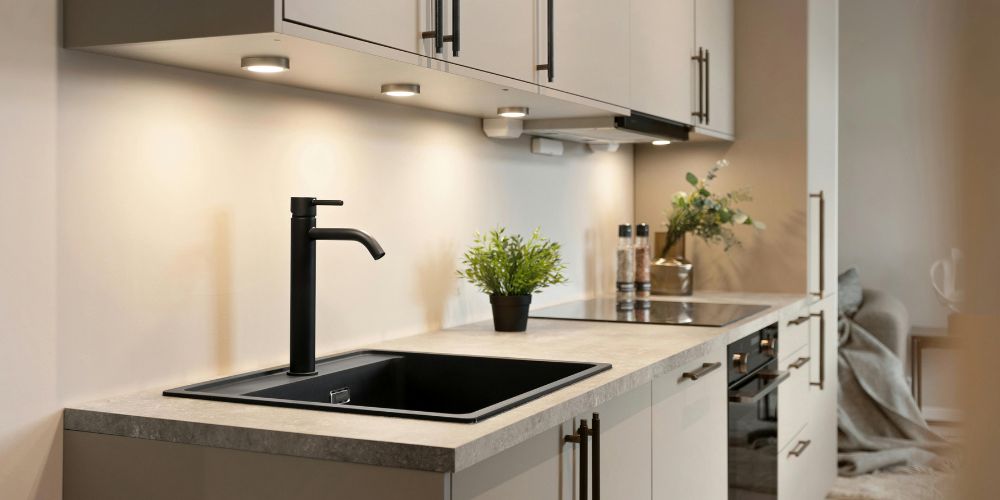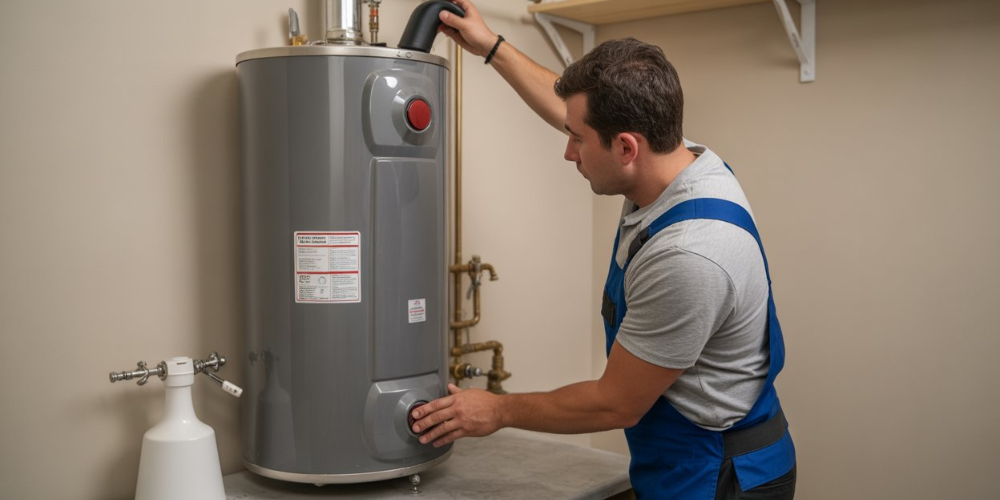Nothing ruins your day faster than that gurgling toilet or the sink that won’t drain. When multiple drains back up at once, your main sewer line is likely the culprit. This underground pipeline is your home’s waste highway, and when it clogs, everything stops.
The good news? You can often clear it yourself with basic tools like a sewer snake or even household solutions before calling in expensive pros. When dealing with this messy household headache, learning to spot the early warning signs and taking quick action can save your floors, wallet, and peace of mind.
Understanding Main Sewer Line Clogs
Your home has one big pipe that takes all the dirty water away. When this pipe gets stuck, it causes big problems. You’ll notice more than one drain not working, strange sounds from toilets, bad smells, or water coming up where it shouldn’t.
Main clogs typically occur when tree roots invade pipes, people flush items that cause blockages, grease accumulates over time, or aging pipes begin to deteriorate.
These problems are serious because they affect your whole house at once. Finding and fixing them quickly stops water from damaging your floors and walls. Don’t wait until water is everywhere – those early warning signs are telling you something’s wrong.
Common Causes of Main Sewer Line Clogs
Your pipes are trying to tell you something. These common issues are why your main sewer line keeps clogging.
-
Tree root intrusion
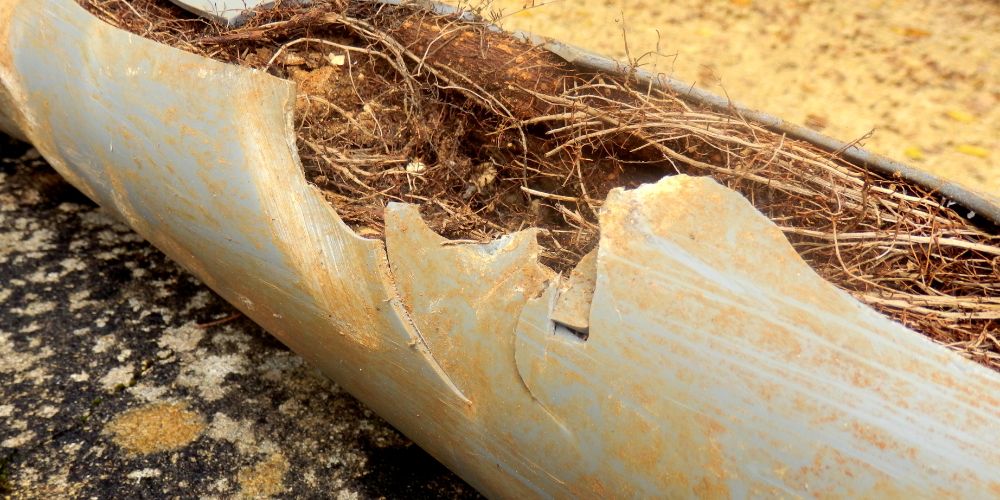
Trees get thirsty. Their roots can find tiny cracks in your sewer pipes, looking for water. Once inside, these roots grow bigger and bigger, creating a mess that stops water from flowing. This happens underground where you can’t see it, until one day your toilets and sinks stop working.
-
Buildup of grease, soap, and debris
That bacon grease you pour down the sink? It turns hard like candle wax in your pipes. Soap leaves a film, and food bits stick to it. Year after year, this gunk builds up until water can barely squeeze through. Eventually, nothing goes down at all.
-
Flushing non-flushable items
Toilets are for toilet paper and bodily waste—nothing else! Those “flushable” wipes? They lie! They don’t break down like toilet paper. Paper towels, feminine products, and dental floss create stubborn clogs that can block your whole system.
-
Aging or damaged pipes (leading to Main Line Repair needs)
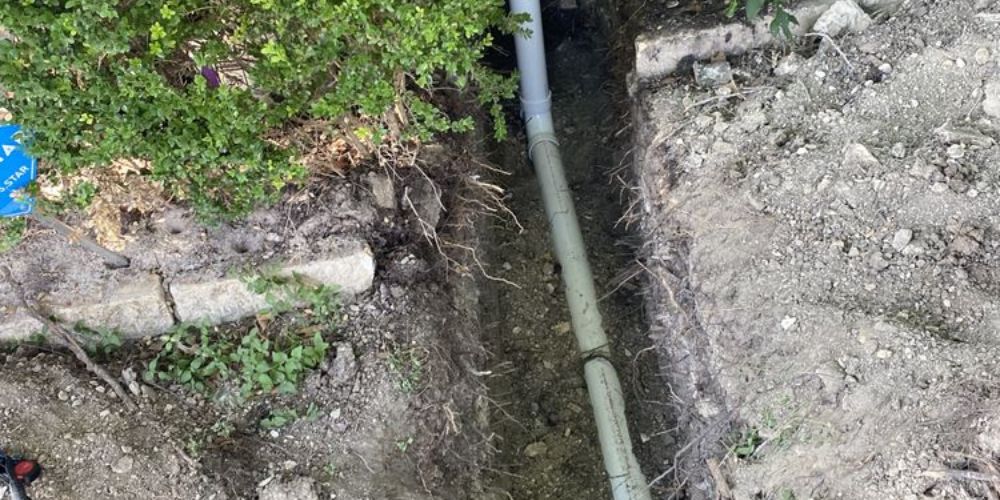
Old pipes get weak. They crack, rust, or sag in spots where waste gets trapped. Older homes often have clay or iron pipes that break down over time. These damaged areas catch everything flowing past until nothing can get through.
-
Heavy rainfall or ground shifting
Big storms can push too much water into city sewers, forcing it back toward your house. When the ground moves from construction, freezing, or natural settling, pipes can crack or disconnect. This creates sudden clogs that stop everything from draining.
Also read, Common Sewer Line Problems and Their Solution
Signs You Have a Main Sewer Line Clog
How do you know if it’s a simple clog or a mainline emergency? These key signs tell the difference.
-
Multiple drains are backing up at once
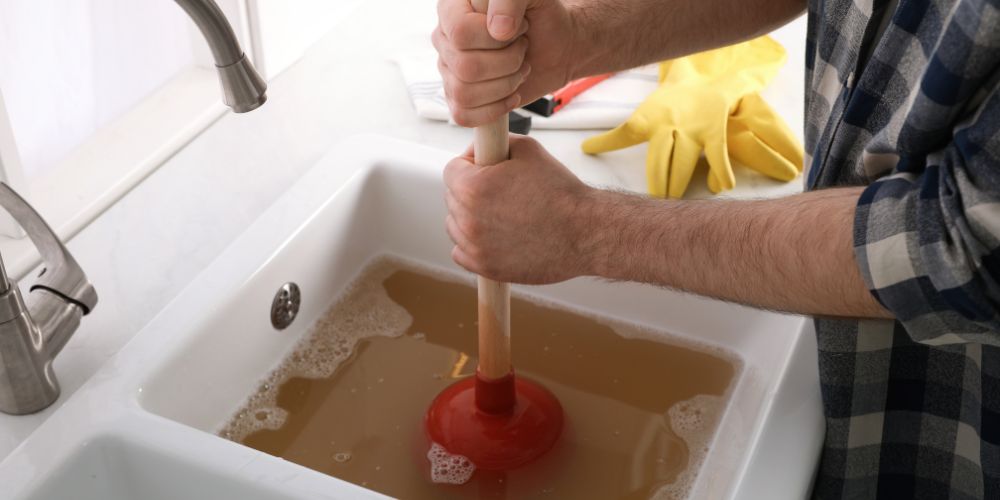
When just one sink is slow, it’s probably a local clog. But when toilets, sinks, and tubs all drain poorly at the same time, that’s your biggest clue of a main line problem. This happens because the main blockage affects everything downstream.
-
Gurgling sounds from drains or toilets
Hear strange noises when you flush? Those bubbling or gurgling sounds are trapped air escaping when water tries to flow past a blockage. The gurgling happens because water is pushing against air that can’t escape normally through the blocked pipe.
-
Slow drainage across the home
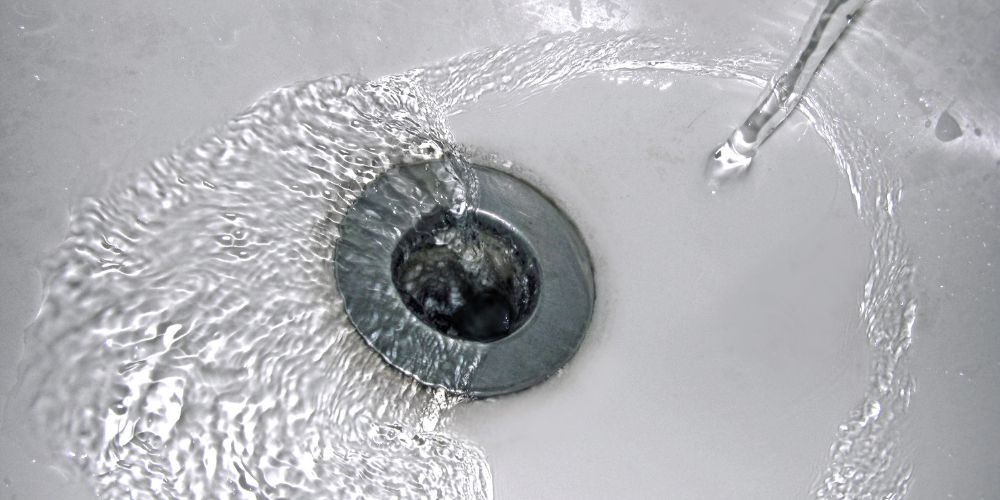
When every sink and shower takes forever to empty, your main line is likely clogged. Water wants to leave your home, but hits a roadblock in the main pipe. The slow-motion draining happens everywhere because all your fixtures connect to that same clogged pipe.
-
Unpleasant odors from drains
That rotten egg smell coming from your drains isn’t normal. Sewer gases should flow away from your home, not into it. When your main line clogs, these smelly gases have nowhere to go except back up your pipes and into your home.
-
Water backing up into tubs or showers
When you flush your toilet and dirty water rises in your bathtub or shower, you’ve got a classic main line clog symptom. These fixtures are usually the lowest points in your plumbing system, so they flood first when waste can’t exit your home.
DIY Sewer Line Unclogging: Step-by-Step Instructions
When water won’t drain, it’s time to take action. Here’s how to clear your sewer line the easy way.
-
Stop Using All Water in the Home
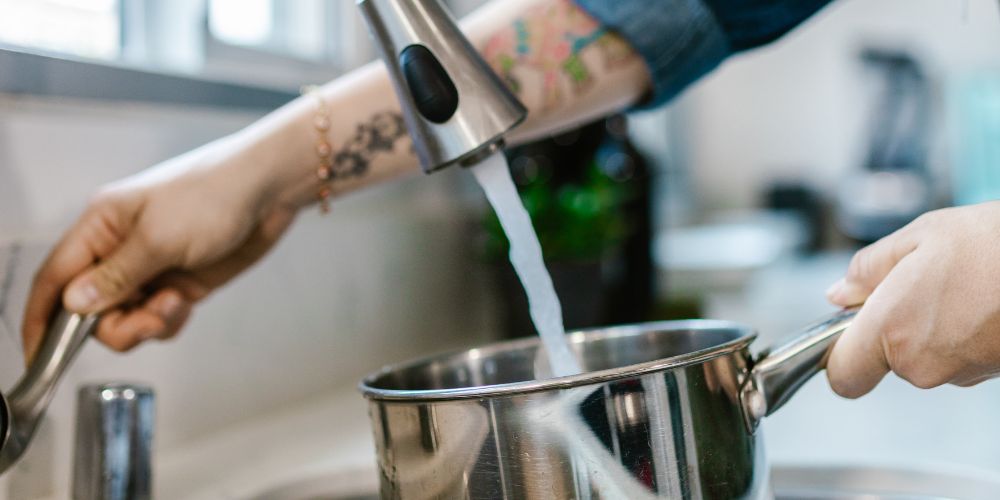
First step – stop all water use in your home. Don’t flush toilets, run sinks, or use dishwashers and washing machines. Any water you use will make the clog worse and might cause messy backups into your home.
-
Locate the Sewer Cleanout
Look for a pipe with a cap sticking up from the ground outside or in your basement. It’s usually PVC with a square or hex-shaped cap. Carefully take off the cap (you might need a wrench). Watch out – water might rush out when you open it.
-
Use a Plumbing Snake or Auger
For stubborn clogs, use a plumbing snake or auger to reach deeper blockages, including those in the main sewer line.
Find the sewer cleanout pipe, which is usually a white pipe near the septic tank or main line. If it’s hidden by landscaping, check around nearby plants. Wear gloves and boots, remove the cap, and step back to let any excess water drain.
Insert the snake until you feel resistance, then pull it back to break up the clog. Repeat as needed. Once clear, rinse the area with clean water and replace the cap.
-
Try a High-Pressure Water Jet (if Available)
If you can get one, water jets work great. Put the hose into the cleanout and turn it on. The strong water stream will blast away the gunk. You can rent these tools from most hardware stores.
-
Flush the System
After clearing the clog, put the cap back on loosely. Turn on a faucet that’s far from the cleanout and see if water drains properly. If no backups happen, you did it! Tighten the cap when you’re done.
When should you call a professional for sewer repair?

If your DIY fixes aren’t working, it’s time to bring in the experts.
- When clogs keep coming back no matter what you try, that’s a red flag.
- Bad smells or yucky water in your yard mean trouble underground.
- Tree roots can break pipes, and old pipes sometimes cave in completely.
Professionals have special cameras they can send down pipes to see exactly what’s wrong. While fixing simple clogs yourself saves money, the serious stuff needs proper tools and skills.
Calling a professional early might cost less than waiting until sewage is backing up into your bathtub or flooding your basement!
For tough sewer problems, PlumbSmart’s certified technicians are just a phone call away. With their 24/7 emergency service, advanced equipment, and fair, upfront pricing, they’ll get your pipes flowing smoothly again in no time.
Wrapping Up…
Stop future clogs before they start. After fixing your pipes, try using pipe-friendly cleaners once a month or get a yearly checkup from a pro.
Taking care of your pipes now means fewer emergency messes later and keeps everything flowing smoothly in your home for years.


